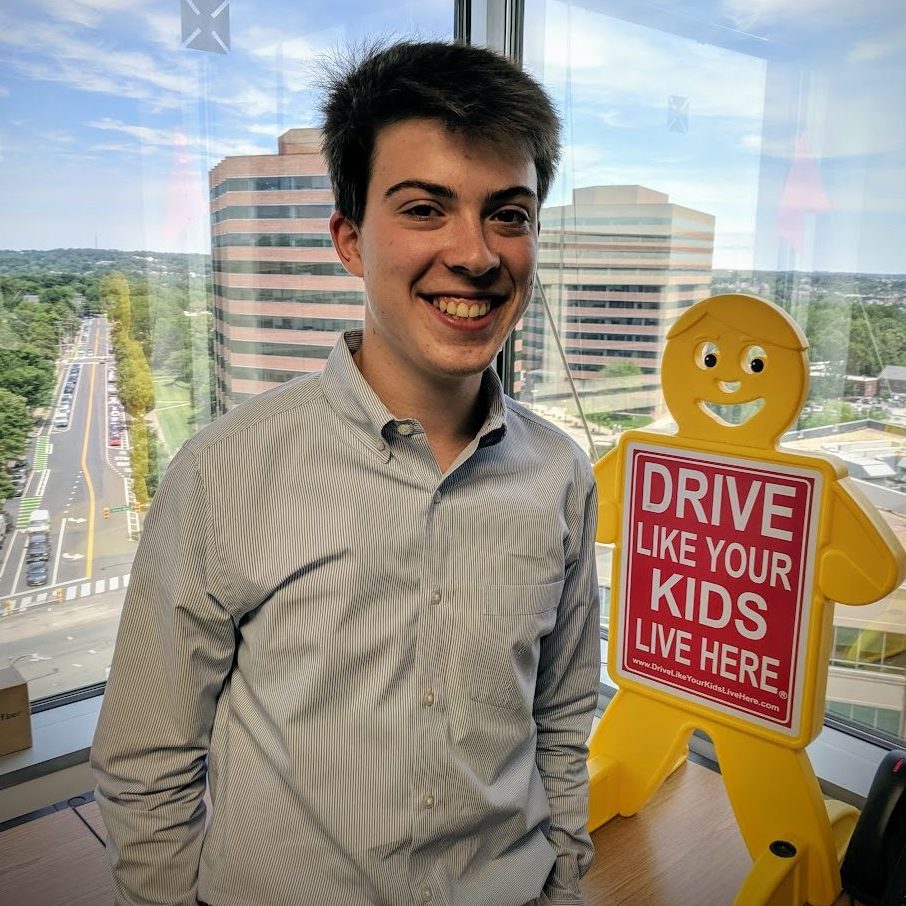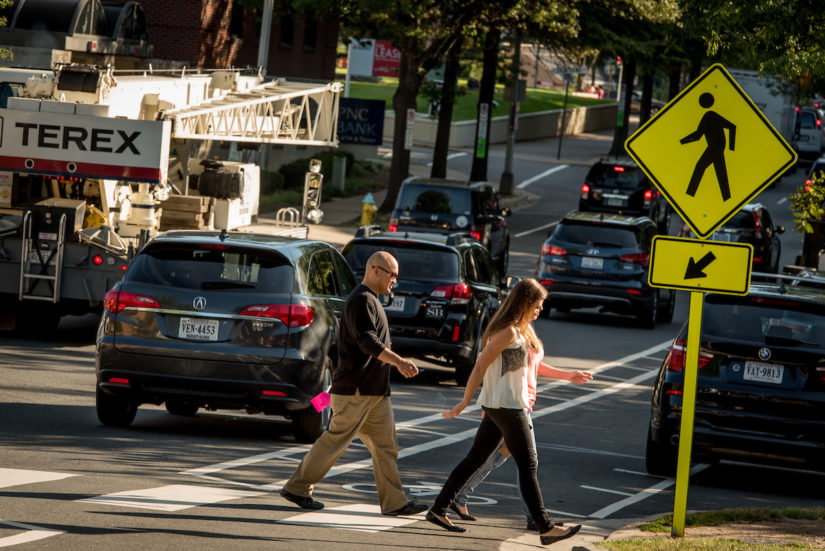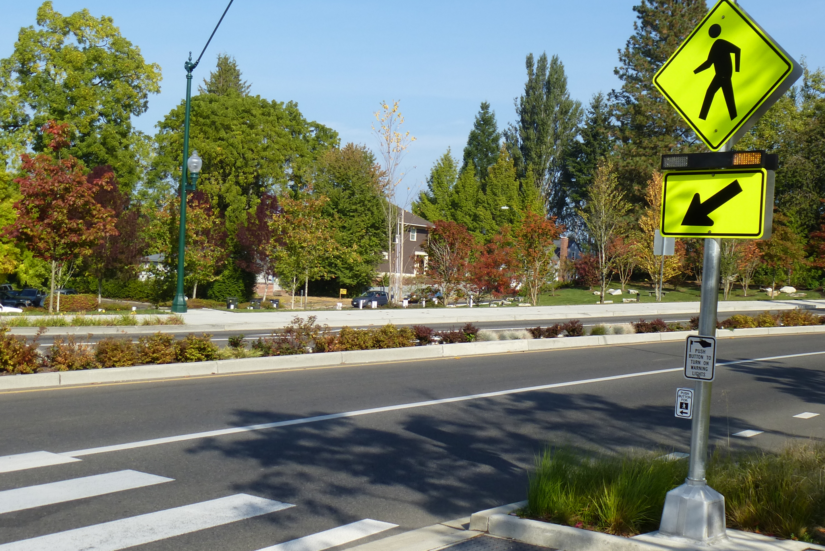How an Internship Led to Safer Walking in Arlington
Arlington has some new talent and new devices to help people walking! Meet Jacob and his work on Rectangular Rapid Flash Beacons.
My name is Jacob Smith, and I’ve been an intern on the County’s Transportation Engineering Design Team for two years. I’ve been helping the County collect and process data, as well as forecast and use that data to improve the safety and convenience of our network for all users.
The Internship
I began my internship with the County when I was a sophomore in high school. Considering that I couldn’t yet drive, it was very fitting that one of my largest responsibilities was collecting data related to active transportation users – pedestrians and bicyclists—and the infrastructure that helps them most. My projects that summer included an inventory of the County’s sub-standard curb ramps and a countywide analysis of the types of roadways at each of our intersections. Both projects represented a different approach to data collection because they were County-wide and comprehensive. In my opinion, they also represented tasks that were ideal for a high school intern!
One of my tasks was a series of annual collision reports that looked at what factors contributed to collisions and how they could be mitigated. Because there are about 2,500 collisions a year in Arlington that generate a crash report, there was certainly a lot of data to be analyzed, and my job involved lots of analysis using GIS mapping software to identify hotspots, trends, and flare-ups. Still, analyzing the County’s pedestrian and bicycle data was always my hardest task. Even in a county with such high numbers of people walking and biking, there simply wasn’t that much collision data to work with (which is a good thing)! While some years we had intersections with up to three dozen vehicle collisions, it was rare to find an intersection where pedestrian collisions totaled at least three. Our streets are relatively safe, but we knew that people walking and biking still do face dangerous situations every day, and it would have been incorrect to sit and wait for collisions to happen before doing anything.
Systemic Safety
To solve this problem, there is a new initiative that is gaining popularity across the country called systemic safety. It acknowledges that crashes are inherently random: for example, if X intersection type is more likely to have serious collisions happen, we know we need to improve all 250+ of such ‘type X’ intersections in the County. This helps us, because we can still systematically improve conditions for people walking without waiting around for a crash to happen. The County’s forthcoming Vision Zero Action Plan will entail even deeper dives into the County’s crash data, including additional systemic analysis and development of recommendations for improving transportation infrastructure where we need it the most.
A Solution: Rectangular Rapid Flash Beacons
My most recent task at the County was a countywide analysis of Rectangular Rapid Flashing Beacons (RRFBs) which you can read more about here. RRFBs are a relatively costly solution compared to signage and markings, so we wanted to make sure we were prioritizing the best possible locations for expending our limited resources (and only drawing drivers’ attention when it is most necessary). I had the task of developing and carrying out a systemic countywide study to qualitatively and quantitatively analyze the operational characteristics of each existing RRFB site.
We’ve now completed a review of our own standards and a white paper of best practices, so that our 20 RRFB projects in the pipeline can deliver the maximum possible benefit. We also secured more than $160,000 from the Virginia Department of Transportation to fund these projects.
Pride in Arlington Transportation
As someone who’s been a pedestrian and bicyclist in Arlington for most of my life, I often feel a high degree of pride in my County and the excellent infrastructure that allows it to be the strong community that it is. However, as someone with a passion for math, engineering, and everything quantitative, I’ve been especially encouraged over my two years as a County employee to find out just how much data crunching goes into making our infrastructure even better. To see a roadway improvement pop up down the street from where you live or work is always a pleasant experience, whether you drive, bike, walk, or ride transit. Still, I imagine other Arlingtonians will also be as glad that this improvement is not only the best possible improvement for the location, but also the best possible location for those dollars to have been spent. I’d like to encourage anyone in the community who is curious about an improvement they’ve seen or an improvement they want to come to an event or reach out and ask questions – the data you get back in response might surprise you, and it might help you make your case! After all, the most consistent thing I’ve learned working in transportation design and engineering since day one is that there is always a lot to learn.
More about RRFBs
To learn more about the County’s Rectangular Rapid Flash Beacons, check out the official Arlington County news release.
Sam Kittner/Kittner.com












Comments are closed here.
To prevent spam, comments will be approved before appearing on the post. If you have a comment or question, but do not want it to be published, please email WalkArlington.